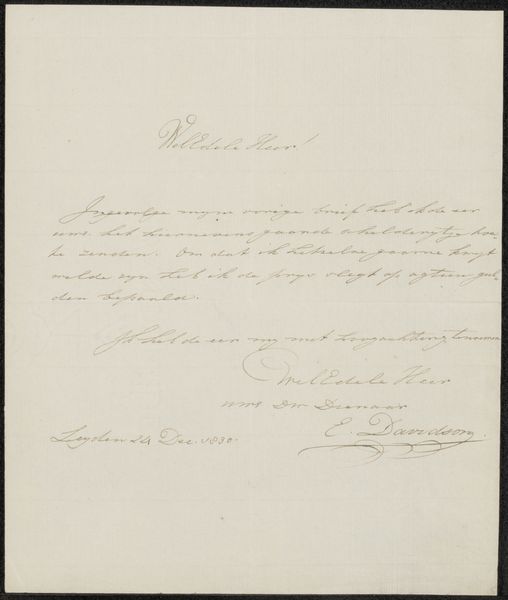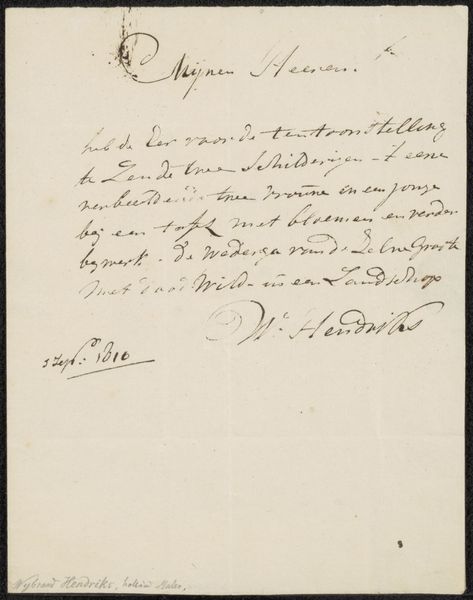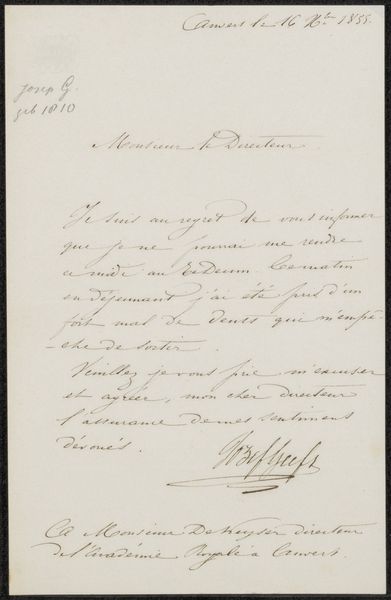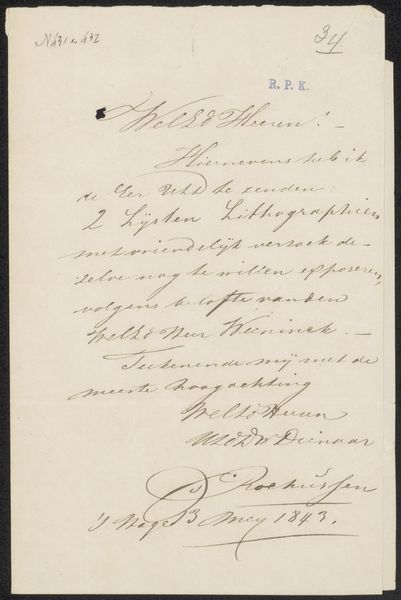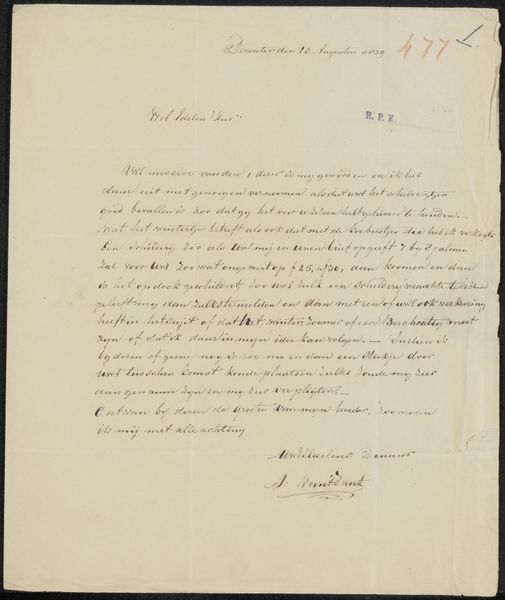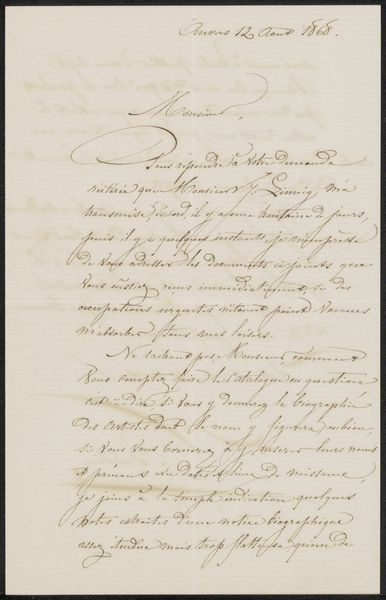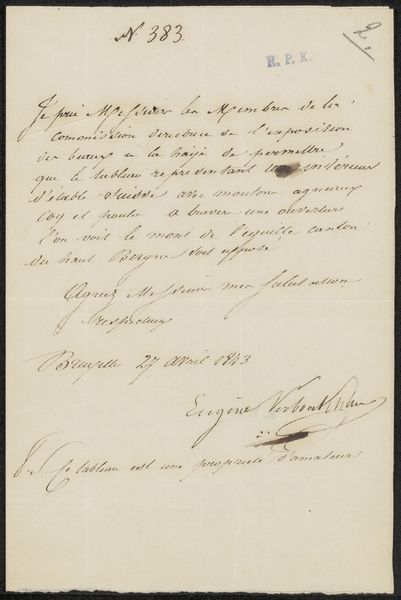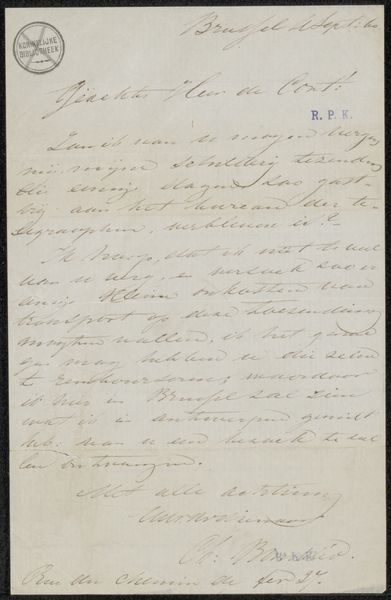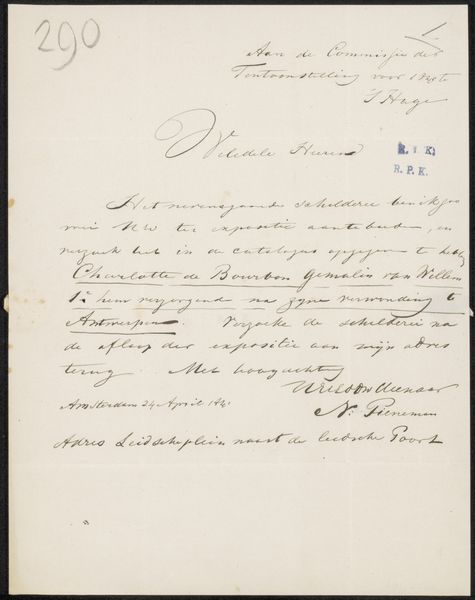
Brief aan de adjundant van dienst van koning der Nederlanden Willem II Possibly 1845
0:00
0:00
barendcorneliskoekkoek
Rijksmuseum
drawing, paper, ink, graphite, pen
#
drawing
#
pen sketch
#
hand drawn type
#
hand lettering
#
paper
#
personal sketchbook
#
ink
#
hand-drawn typeface
#
ink drawing experimentation
#
pen-ink sketch
#
pen work
#
graphite
#
sketchbook drawing
#
pen
#
sketchbook art
#
calligraphy
Copyright: Rijks Museum: Open Domain
Curator: This delicate ink drawing, "Brief aan de adjudant van dienst van koning der Nederlanden Willem II" from possibly 1845 by Barend Cornelis Koekkoek, speaks volumes despite its modest appearance. It feels like a whisper from the past. Editor: It really does. It looks almost like a practice sketch for formal calligraphy. I wonder, what significance does this seemingly simple letter hold? Curator: Well, let's consider the context. Koekkoek, a renowned landscape painter, is writing to request an audience with King Willem II. He references sketches relating to "his misfortunes in the grand Duchy of Luxembourg". This act of appealing directly to power reflects both his privilege as a recognized artist, but also his potential vulnerability within the socio-political structures of the time. Who did this system serve and protect? Editor: So, the letter isn't just a simple request; it's a glimpse into the relationship between artists, the monarchy, and perhaps even Dutch colonial interests, given the mention of Luxembourg. It makes me wonder about the power dynamics. Curator: Precisely! And who held that power, and at what cost? How does Koekkoek’s plea engage or resist such structures, in its own way? This small piece of paper connects us to much larger questions of privilege, access, and representation within 19th-century European society. It shows an artist working the system, or trying to, for personal and perhaps political ends. Editor: It’s fascinating to see how much can be unpacked from something that initially appears to be just a historical document. Now I wonder about Koekkoek's misfortunes and what exactly those sketches portrayed! Curator: Exactly. Every line tells a story, if you’re willing to look critically at whose stories get told and why.
Comments
No comments
Be the first to comment and join the conversation on the ultimate creative platform.
